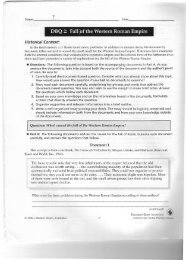Forensic Investigation Curriculum (pdf) - Darien Public Schools
Forensic Investigation Curriculum (pdf) - Darien Public Schools
Forensic Investigation Curriculum (pdf) - Darien Public Schools
You also want an ePaper? Increase the reach of your titles
YUMPU automatically turns print PDFs into web optimized ePapers that Google loves.
D 10. Describe the general structure of the atom, and explain how the properties<br />
of the first 20 elements in the Periodic Table are related to their atomic structures.<br />
D 11. Describe how atoms combine to form new substances by transferring<br />
electrons (ionic bonding) or sharing electrons (covalent bonding).<br />
Reaction Rates<br />
� Chemical reaction rates depend on factors that influence the frequency of collision of<br />
reactant molecules.<br />
� The rate of reaction is the decrease in concentration of reactants or the increase in<br />
concentration of products with time.<br />
� Reaction rates depend on factors such as concentration, temperature and pressure.<br />
� Catalysts play a role in increasing the reaction rate by changing the activation energy<br />
in a chemical reaction.<br />
CT High School Physics Standards<br />
Motion and Forces: Newton's laws predict the motion of most objects<br />
� When forces are balanced, no acceleration occurs; thus an object continues to<br />
move at a constant speed or stays at rest.<br />
� The law F = ma is used to solve motion problems that involve constant forces.<br />
� When one object exerts a force on a second object, the second object always<br />
exerts a force of equal magnitude and in the opposite direction.<br />
� Applying a force to an object perpendicular to the direction of its motion causes<br />
the object to change direction.<br />
� Circular motion requires the application of a constant force directed toward the<br />
center of the circle.<br />
� Newton's laws are not exact, but provide very good approximations unless an<br />
object is small enough that quantum effects become important.<br />
Conservation of Energy and Momentum: The laws of conservation of energy and<br />
momentum provide a way to predict and describe the movement of objects.<br />
� Kinetic energy can be calculated by using the formula E = (1/2)mv 2 .<br />
� The principles of conservation of momentum and energy can be used to solve<br />
problems involving elastic and inelastic collisions.<br />
National Standards addressed<br />
CONTENT STANDARD B:<br />
As a result of their activities in grades 9-12, all students should develop an understanding<br />
of<br />
• Chemical reactions<br />
42



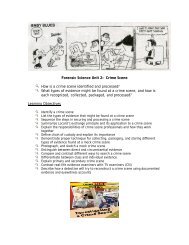
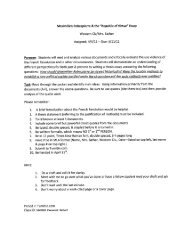

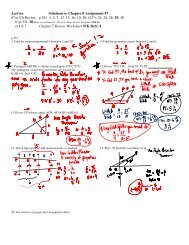

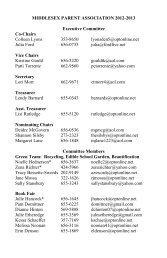
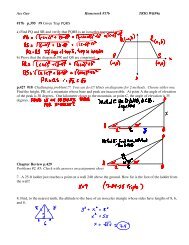
![Name Independent Practice Worksheet 23.]](https://img.yumpu.com/13527672/1/190x245/name-independent-practice-worksheet-23.jpg?quality=85)


